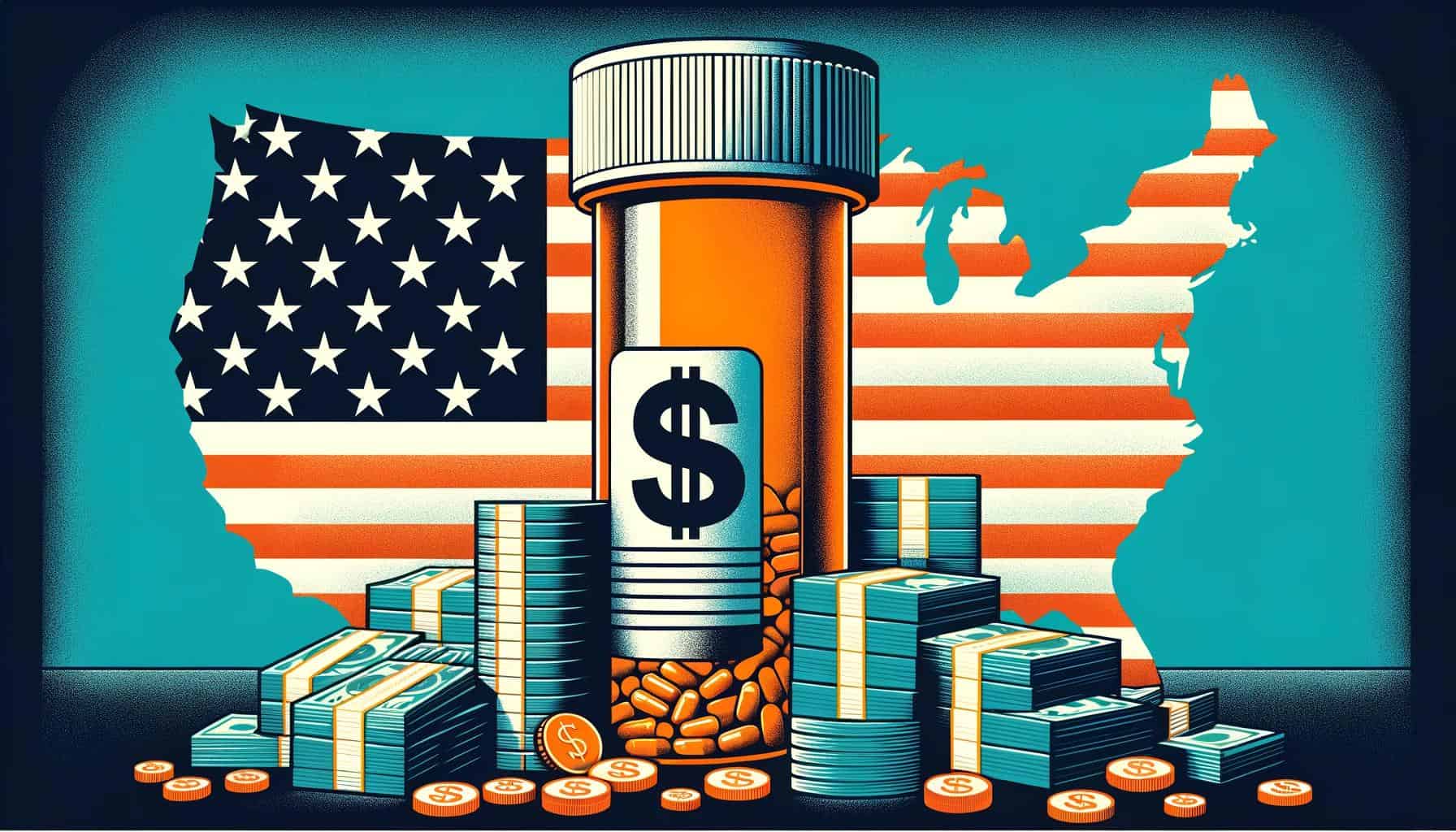
Healthcare in the United States is filled with paradoxes. The nation spent about $12,500 per person on healthcare in 2022, which is much more than any other high-income country. Yet, despite spending nearly 18% of its GDP on healthcare, the U.S. has the lowest life expectancy at birth and the highest rate of people with multiple chronic diseases of any wealthy country. What gives?
Untangling the reasons why the U.S. has the world’s costliest healthcare is no easy feat. David Cutler, professor in the Department of Global Health and Population at Harvard T.H. Chan School of Public Health, wrote in 2020 that it all boils down to the U.S. healthcare system’s excessive administrative costs, price gouging by pharmaceutical companies and hospitals, and the misallocation of medical resources that prioritizes high-tech interventions over routine care.
Among the three main points listed by Prof. Cutler, price gouging is perhaps the most pervasive and among the easiest to fix. Here’s what a recent study found that is sure to get a lot of people mad: U.S. prescription drug prices are nearly triple those in other affluent countries.
Researchers at the RAND Corporation performed a comprehensive analysis comparing the prices of prescription drugs in the U.S. with those in 33 high-income nations of the Organisation for Economic Cooperation and Development (OECD). Here are the key findings:
- In the U.S., except for unbranded generics, drug manufacturers’ gross prices were significantly higher than in other countries.
- U.S. drug prices were 278% higher than those in other countries across all categories.
- For brand-name original drugs, U.S. gross prices were 422% of those in comparison countries.
- After accounting for rebates from manufacturers, U.S. net prices for brand-name original drugs were still over three times higher than in other countries.
- The U.S. had lower prices for unbranded generics compared to most countries, with these generics making up 90% of prescription drug volume but only 8% of spending.
- By contrast, brand-name original drugs comprised just 7% of U.S. prescription volume but accounted for 87% of spending.
- Despite the large market share and low prices of unbranded generics in the U.S., they did not offset the high prices of brand-name original drugs.
- Total drug spending was $989 billion in 2022. The U.S. was responsible for 62% of this spending although it accounted for only 24% of the drug sale volume.
“These findings provide further evidence that manufacturers’ gross prices for prescription drugs are higher in the U.S. than in comparison countries,” Andrew Mulcahy, lead author of the study and a senior health economist at RAND, a nonprofit research organization, said in a media statement. “We find that the gap is widening for name-brand drugs, while U.S. prices for generic drugs are now proportionally lower than our earlier analysis found.
What’s startling is that this trend is unabating. A 2023 analysis by AARP found that the list prices for the 25 drugs commanding the highest spending by Medicare have more than tripled since their market debut. This surge in drug prices has left a third of U.S. adults unable to afford their prescription medication.
The Inflation Reduction Act aims to address this issue for Medicare users by limiting price increases to the rate of inflation and allowing Medicare to negotiate lower prices. However, these benefits do not apply to the 55% of Americans with commercial insurance, who face similar price hikes without relief. In July 2023, drug companies raised prices for 112 drugs above the 3% inflation rate. These increases affect prices across all insurance types, according to the Center for American Progress.
With many Americans uninsured or otherwise unable to handle their medical expenses, the healthcare system is increasingly a topic of debate and concern. Studies like these can help to truly put things into perspective.






